13 Antique Mirrors That Are Always in Demand With Collectors
Antique mirrors bring together art, history, and timeless design in a way that modern pieces rarely match. Their detailed frames and vintage finishes create a look that feels both classic and inviting. Many collectors are drawn to them for their charm and the nostalgia they evoke. Whether found in an old estate or an antique market, these mirrors never lose their appeal.
This post may contain affiliate links, which helps keep this content free. Please read our disclosure for more info.
Venetian Glass Mirror
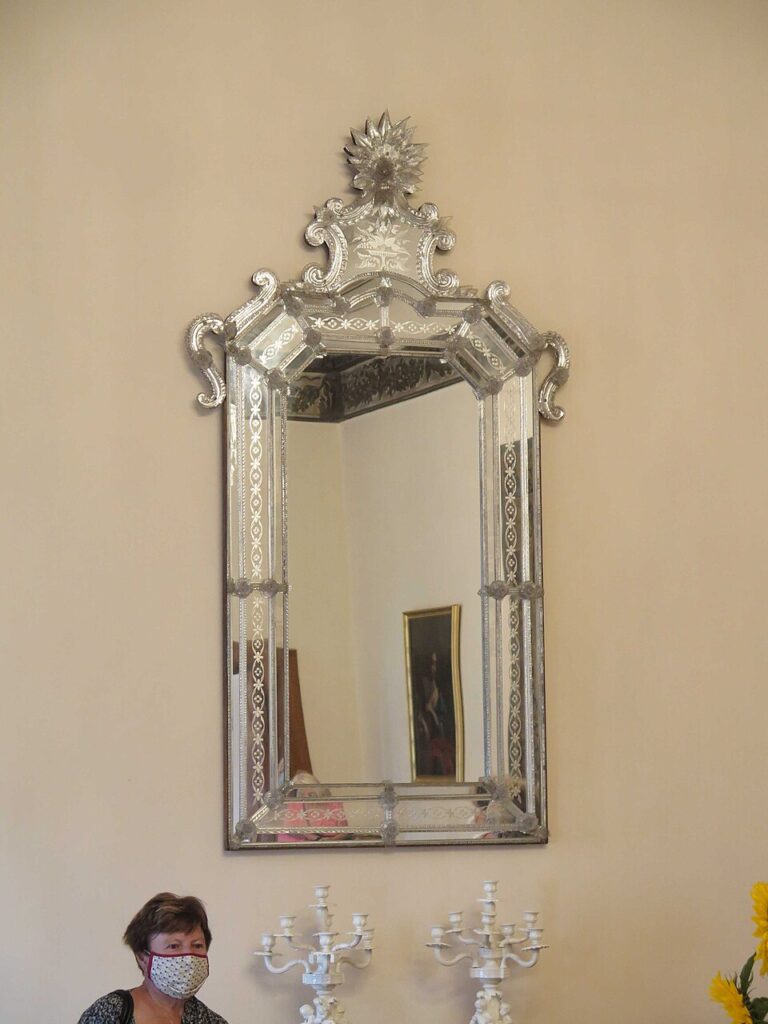
Produced in Venice during the 16th and 17th centuries, Venetian glass mirrors are among the most admired antique mirrors in the world. Their shimmering surfaces and delicate floral engravings made them symbols of luxury during the Renaissance. Each piece was handcrafted using techniques perfected on the island of Murano. Depending on the size and condition, their value ranges from $5,000 to $50,000. Collectors love them for their luminous glasswork and romantic charm.
The beauty of Venetian mirrors lies in their elegant artistry and fragile appearance. Many include etched details, beveled edges, and hand-cut crystal decorations. They bring a touch of European grandeur to modern interiors. Authentic examples are rare, which adds to their desirability among collectors. Each Venetian mirror feels like a preserved fragment of old-world elegance.
Louis Philippe Mirror
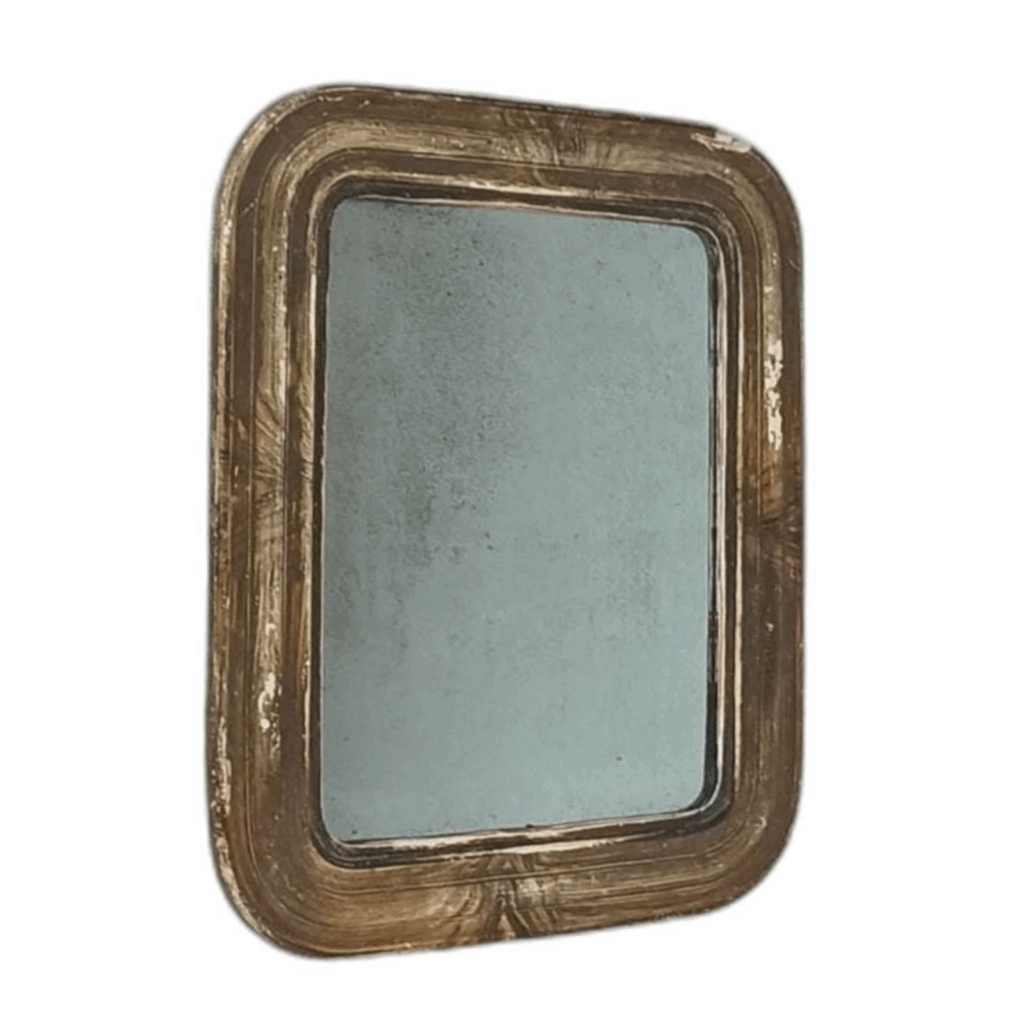
Emerging in France during the early 19th century, Louis Philippe mirrors became popular for their curved tops and gilded frames. These mirrors were often seen in Parisian homes as a symbol of good taste and refinement. Most were made between 1830 and 1850 with wood and gold leaf finishes. Prices typically fall between $1,500 and $6,000 depending on size and condition. Their graceful simplicity makes them highly collectible pieces of French design.
Collectors admire the Louis Philippe mirror for its balanced blend of elegance and restraint. The rounded top and understated ornamentation make it suitable for many interior styles. Antique dealers often recommend these mirrors for their enduring appeal and historical value. They reflect the romantic spirit of 19th-century France. A well-preserved example adds instant charm to any room.
Regency Giltwood Mirror
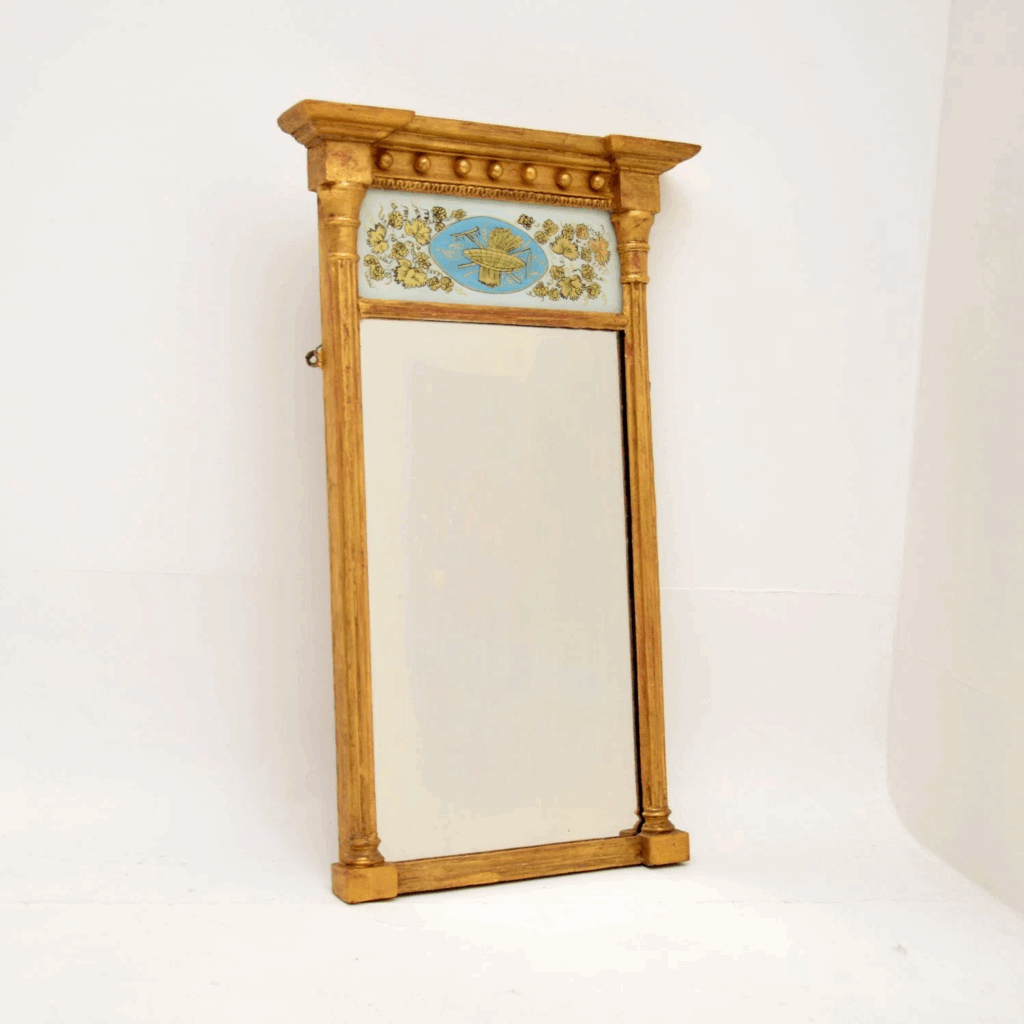
Produced in England during the early 19th century, Regency giltwood mirrors stand out for their grand proportions and elaborate gold leaf decoration. These mirrors often featured acanthus leaves, scrolls, and eagle crests. They were designed to reflect both light and luxury in stately homes. Depending on condition and size, their value can range from $2,500 to $12,000. They remain highly favored for their rich, golden presence.
Collectors cherish the Regency giltwood mirror for its detailed carving and historical prestige. The gleaming frames complement both classic and contemporary interiors. Many pieces were handcrafted from pine or mahogany and finished in gold leaf. Their grandeur evokes the elegance of the Regency era. Each mirror reflects the opulence of 19th-century British design.
Georgian Chippendale Mirror
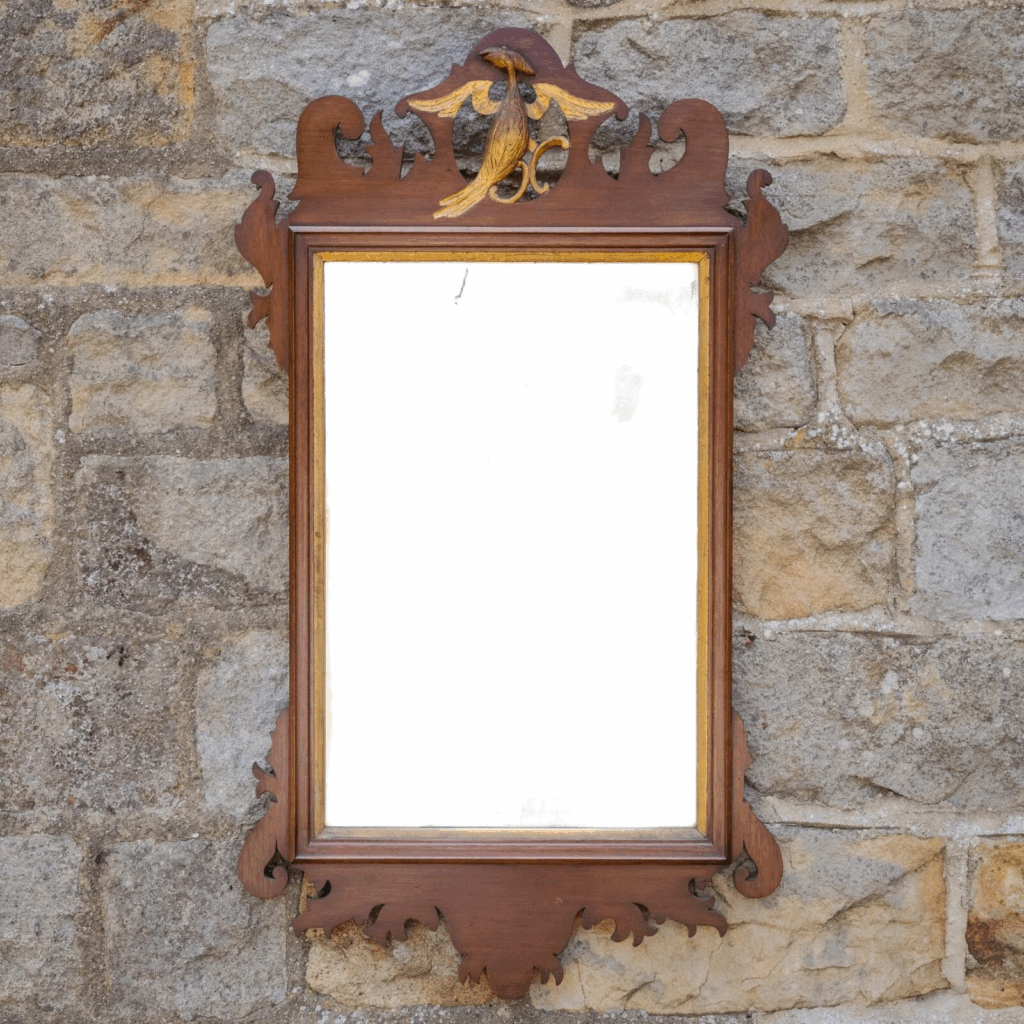
The Georgian Chippendale mirror, produced in the mid-18th century, showcases the artistry of English furniture maker Thomas Chippendale. Known for its carved mahogany and giltwood frames, this design often features scrolls, foliage, and rococo flourishes. Authentic examples are rare, making them highly desirable. Depending on age and craftsmanship, they sell for $8,000 to $30,000. Their refined detail makes them treasures in antique collections.
What makes the Chippendale mirror special is its blend of elegance and elaborate carving. Many include pierced fretwork and gilded details that display remarkable skill. Collectors admire them for their association with one of history’s greatest designers. Owning one represents both heritage and fine artistry. It remains one of the most distinguished mirrors from the Georgian period.
Federal Eagle Mirror
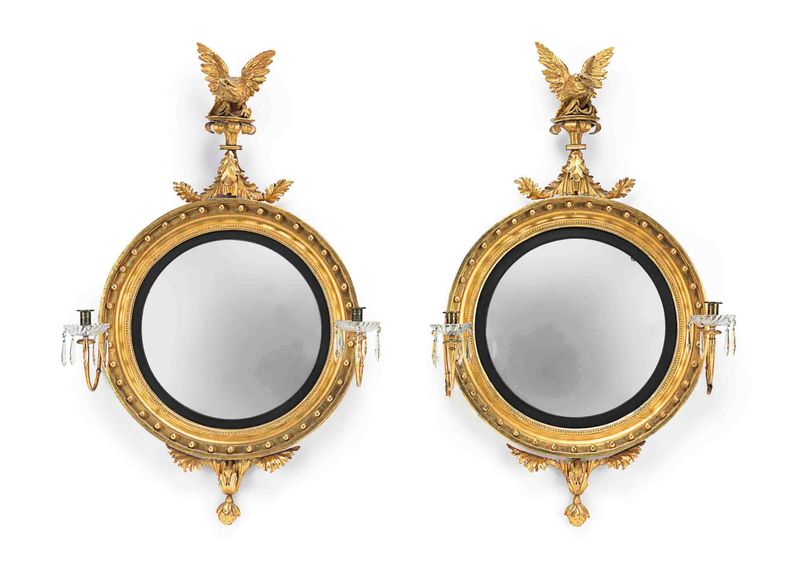
Federal eagle mirrors were produced in America between 1780 and 1830, during the Federal period. They feature a convex mirror encased in a gilded circular frame topped with an eagle crest. These mirrors reflected the patriotic spirit of early America. Prices generally range from $2,000 to $10,000. They remain iconic symbols of American neoclassical style.
Collectors appreciate Federal eagle mirrors for their historic symbolism and bold presence. The use of convex glass was meant to brighten interiors by reflecting more light. Many surviving examples are made of carved wood with gold finishes. They add a distinguished touch to traditional décor. Antique enthusiasts value their connection to the early years of the United States.
Trumeau Mirror
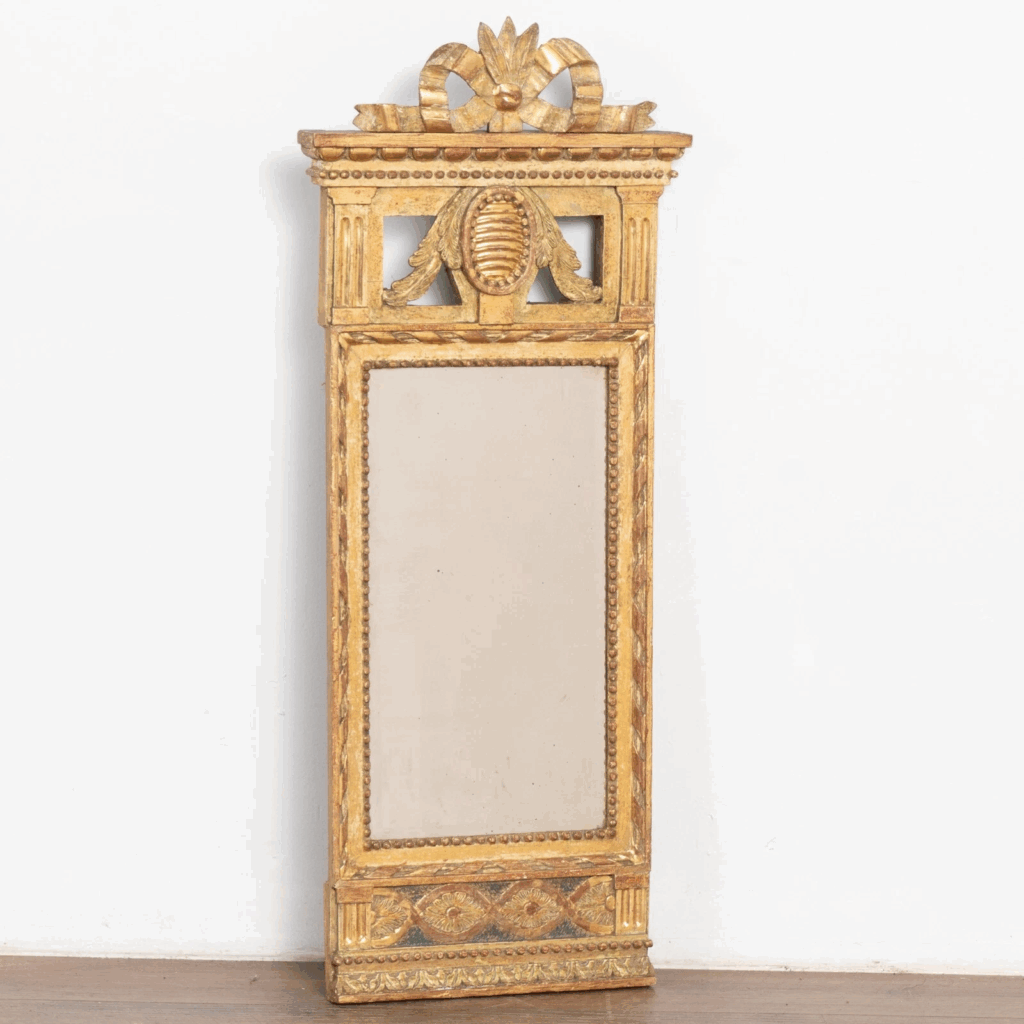
Trumeau mirrors first appeared in France during the 18th century and were designed to hang above fireplaces. They feature a painted or carved panel above the glass, often depicting pastoral or classical scenes. These mirrors were decorative centerpieces in aristocratic homes. Depending on craftsmanship and artwork, prices range from $3,000 to $20,000. Each piece carries the elegance and creativity of the Rococo and Neoclassical periods.
Collectors value Trumeau mirrors for their mix of art and reflection. Many are framed with gilded wood and display soft pastel paintings. The combination of fine artistry and antique mirror glass makes them sought-after decorative pieces. Authentic versions are treasured for their delicate beauty and detailed craftsmanship. Owning one feels like holding a piece of French history.
Art Deco Mirror
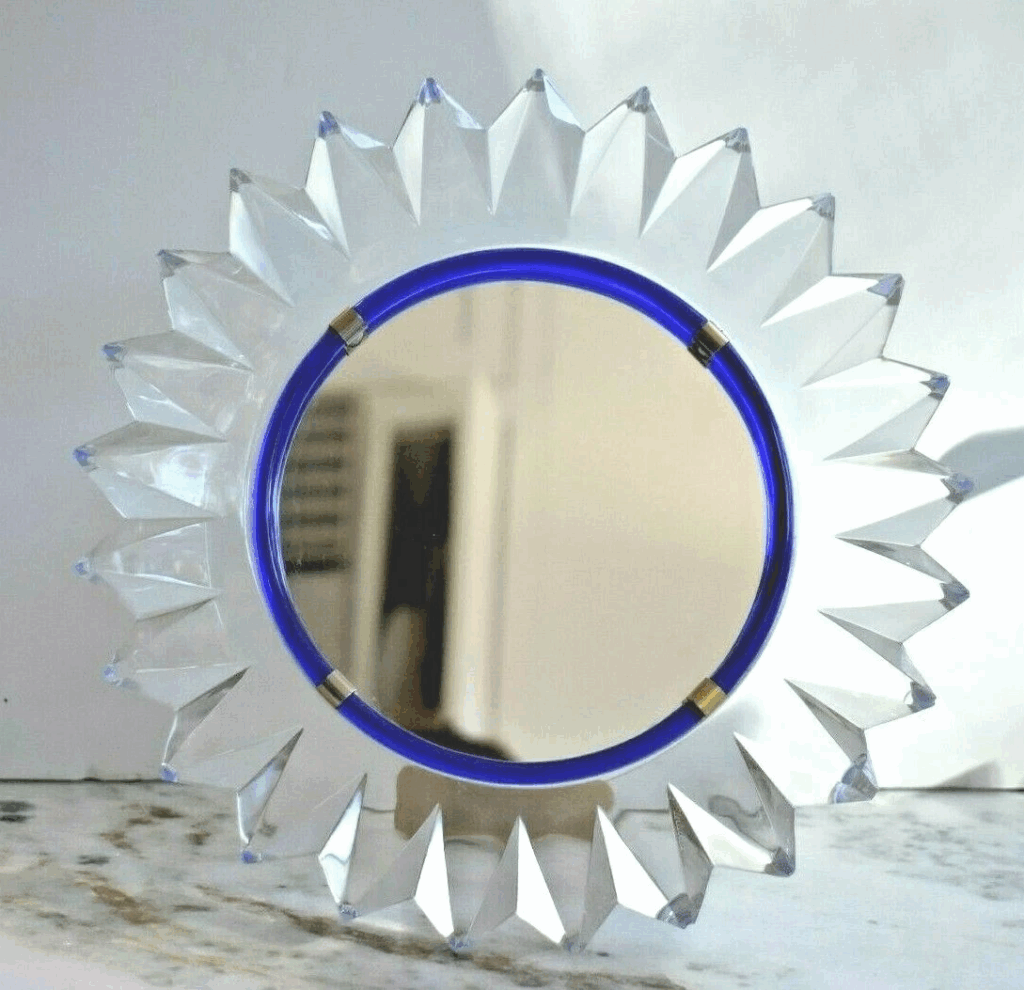
Art Deco mirrors, produced between the 1920s and 1940s, reflect the glamour and geometry of the Jazz Age. Their sleek shapes and bold patterns set them apart from earlier styles. Many feature chrome, glass, or lacquered frames. Values range from $800 to $6,000 depending on size and rarity. They appeal to collectors who enjoy early 20th-century design.
Collectors appreciate Art Deco mirrors for their symmetry and stylish lines. These mirrors often serve as statement pieces in both vintage and modern interiors. Many are octagonal or sunburst-shaped, with mirrored edges that add flair. Their design represents a bridge between old-world luxury and modern innovation. Each piece captures the spirit of the Roaring Twenties.
Rococo Gilt Mirror
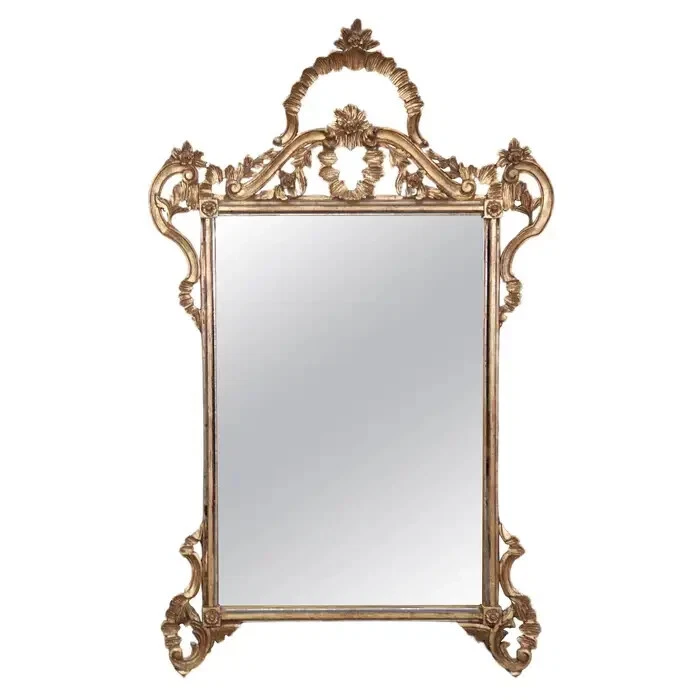
Emerging in France during the 18th century, Rococo gilt mirrors are known for their asymmetrical curves and ornate decorations. These pieces often featured cherubs, shells, and foliage motifs. Their fluid designs made them a statement of luxury in royal homes. Depending on size and detailing, their value can range from $4,000 to $25,000. They remain prized by collectors who love opulent antiques.
The Rococo gilt mirror’s charm comes from its flowing lines and radiant gold leaf finish. Each one captures the light beautifully, adding warmth to any room. Collectors favor authentic French or Italian examples for their artistry. Many of these mirrors were displayed in palaces and manors. They bring a sense of romance and grandeur to modern interiors.
Empire Mirror
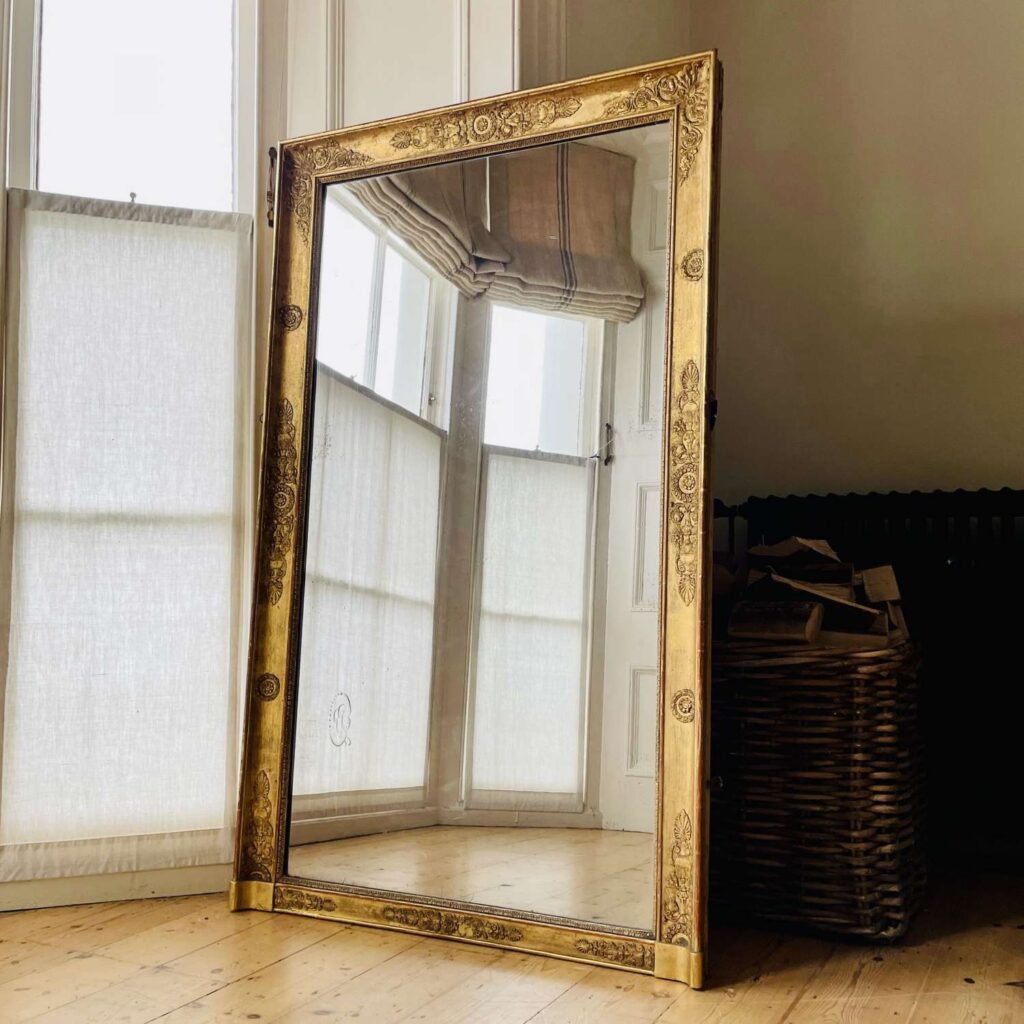
Produced in France during the early 19th century, Empire mirrors were influenced by the grandeur of Napoleon’s reign. They often featured bold frames with laurel wreaths, eagles, and other classical motifs. Typically crafted from mahogany or giltwood, they balanced strength with elegance. Market values usually fall between $3,000 and $15,000. They remain a favorite for those drawn to classical design.
Collectors enjoy Empire mirrors for their historical significance and stately appearance. The clean lines and symbolic carvings reflect the power and pride of the Napoleonic era. Many are found in grand estates and museums today. These mirrors add a sense of drama and history to any interior. The Empire style continues to fascinate admirers of antique design.
Baroque Mirror
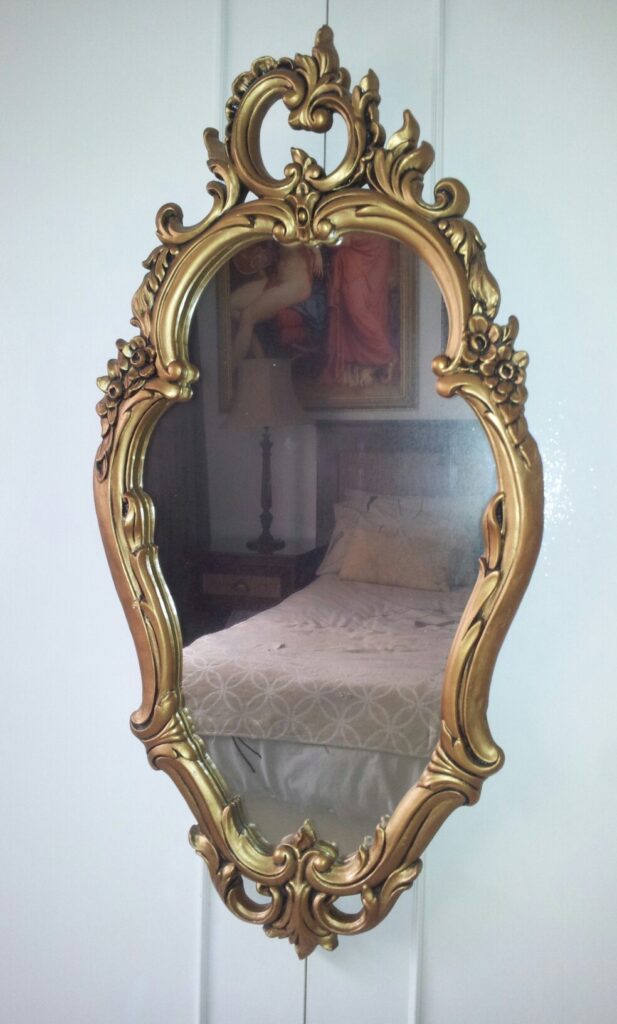
Baroque mirrors date back to the 17th century and were popular in Italy, France, and Spain. Their heavy gilded frames feature dramatic carvings and flowing forms. Often oversized, they were used to enhance the grandeur of palaces and churches. Depending on origin and size, prices range from $6,000 to $40,000. Their commanding presence makes them highly collectible.
Collectors treasure Baroque mirrors for their theatrical beauty and sense of history. The detailed carvings often depict scrolls, angels, and acanthus leaves. These mirrors reflect the artistry of a time when opulence was celebrated. Well-preserved examples are rare and continue to attract strong interest at auctions. They bring dramatic flair and antique sophistication to any setting.
Victorian Overmantel Mirror
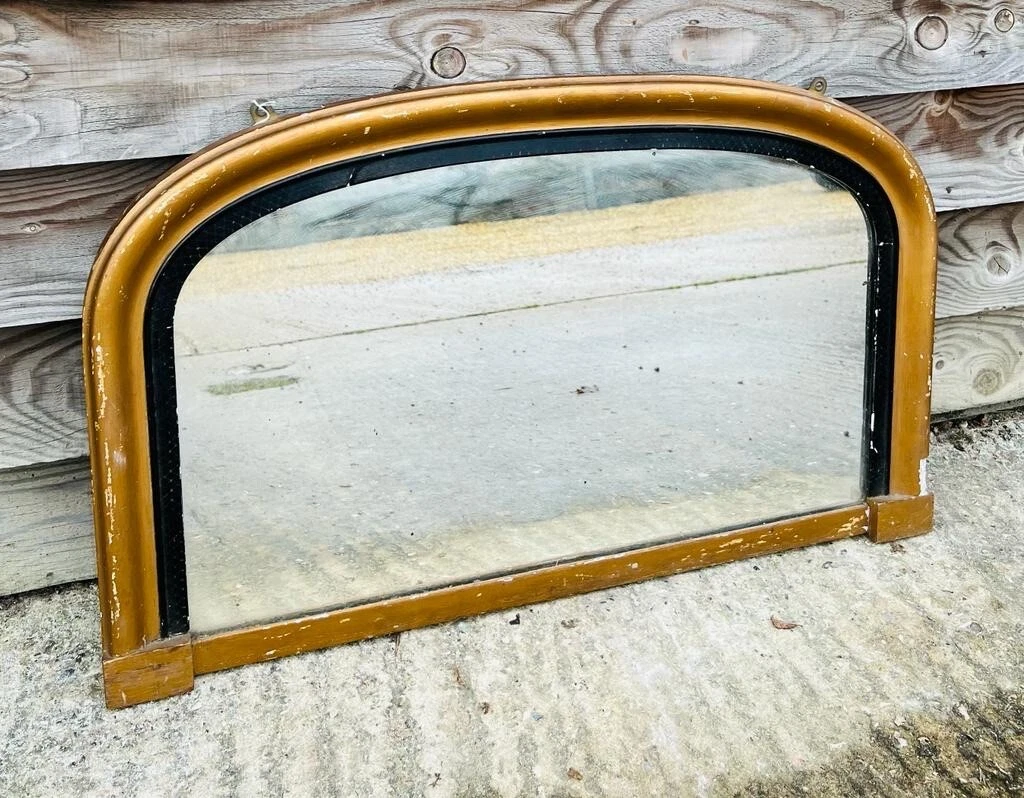
Produced during the late 19th century, Victorian overmantel mirrors were designed to sit above fireplaces. These large mirrors featured elaborate wooden or gilt frames decorated with floral and geometric motifs. They were common in elegant townhouses and estates. Prices typically range from $1,000 to $5,000. Their stately appearance makes them ideal focal points in period homes.
Collectors are drawn to Victorian overmantel mirrors for their decorative appeal and versatility. The craftsmanship reflects the Victorian taste for grandeur and symmetry. Many were made from walnut or mahogany with ornate detailing. Restored examples remain popular in both antique and modern interiors. They combine functionality with timeless charm.
Neoclassical Mirror
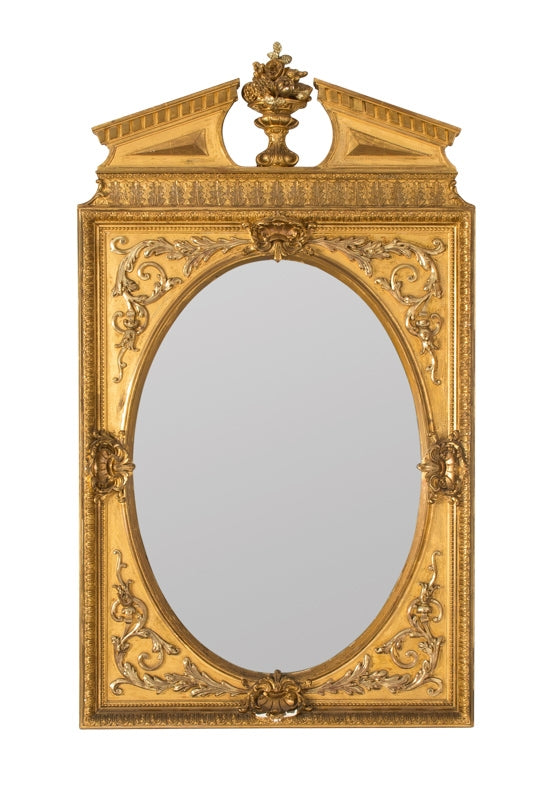
Neoclassical mirrors became fashionable in Europe during the late 18th century. They are easily recognized by their refined symmetry, columns, and laurel wreath decorations. Crafted in gilded wood or painted finishes, they were admired in aristocratic homes. Depending on craftsmanship, they are valued between $2,500 and $10,000. Their timeless aesthetic keeps them in demand among collectors.
Collectors enjoy Neoclassical mirrors for their grace and harmony. Their designs draw inspiration from ancient Greek and Roman architecture. Many examples feature painted medallions or carved garlands. They bring balance and sophistication to a variety of interiors. The Neoclassical mirror remains a beautiful reminder of classical inspiration in home décor.
Sunburst Mirror
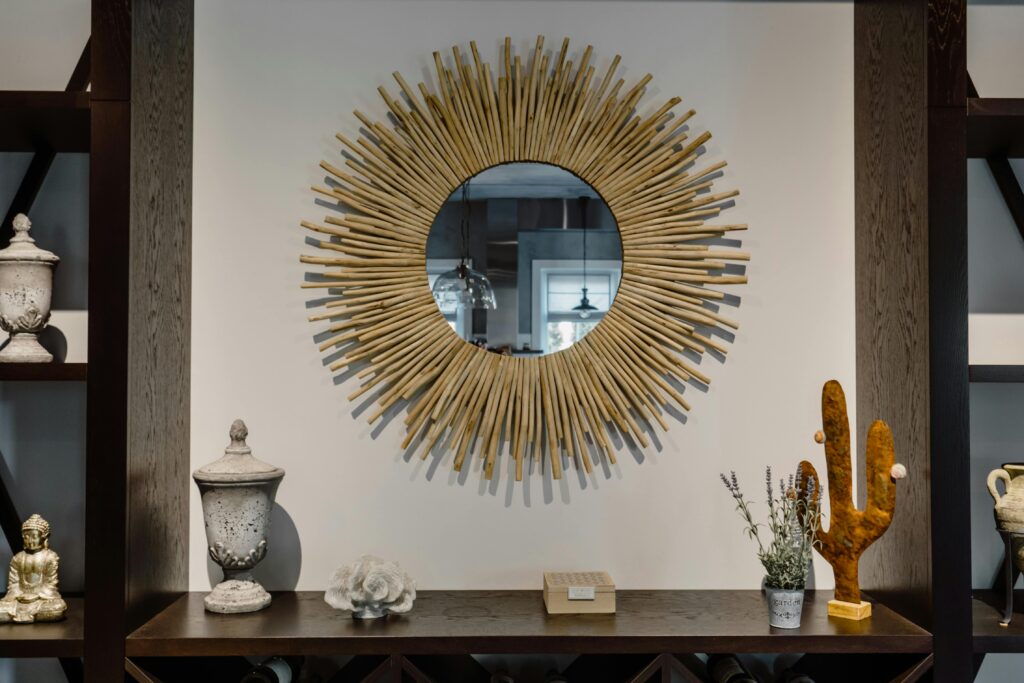
The Sunburst mirror became popular in France during the mid-20th century but was inspired by designs from Louis XIV’s reign. Its radiant shape symbolized light and power. Made from gilded metal or carved wood, it adds a striking accent to any space. Prices usually range from $1,200 to $5,000. The mirror’s sculptural form keeps it desirable for collectors and decorators alike.
Collectors admire the Sunburst mirror for its ability to brighten a room both literally and visually. It fits effortlessly into various styles from vintage to contemporary. Original mid-century versions from France and Italy are especially prized. The design’s link to the Sun King adds historical charm. Its timeless energy makes it a favorite across generations.
This article originally appeared on Avocadu.
